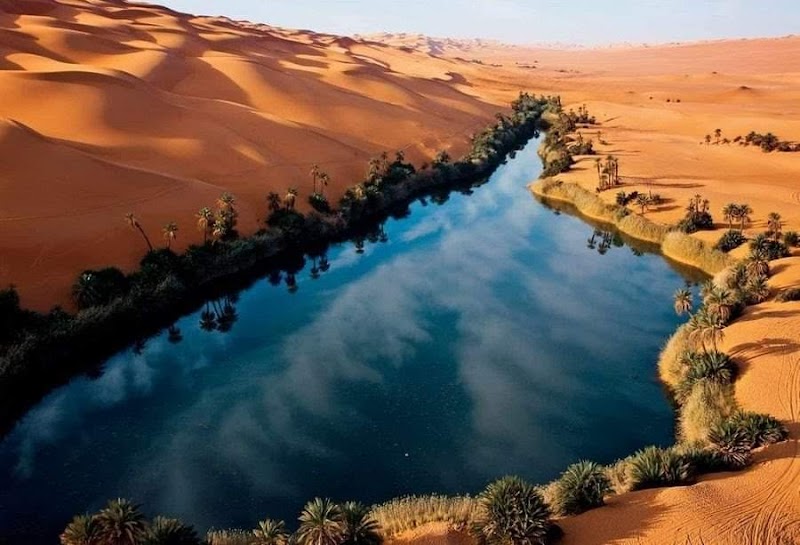Embark on an unforgettable trek through the sweeping dunes of the Sahara in Libya’s Fezzan region. Discover the rugged beauty of this vast desert landscape near Sabha, where shifting sands test your endurance and ancient cultural routes invite exploration. Learn how to prepare for the challenges and embrace the adventure.
Hydration is Non-Negotiable
Carry at least 3 liters of water per day and use a reliable filtration system for unexpected sources. Drink small amounts regularly to avoid dehydration in the dry desert heat.
Wear Breathable Layers
Temperatures swing dramatically between day and night. Lightweight, moisture-wicking fabrics paired with insulating layers help you adapt to heat and cold efficiently.
Protect Your Feet and Ankles
Use sturdy hiking boots with good ankle support and gaiters to keep sand out. The shifting dunes can destabilize your footing, increasing risk of injury.
Travel Early or Late in the Day
Plan trekking during dawn or dusk to avoid the peak heat of midday and experience the desert’s shifting shadows and cooler air.
Trekking the Vast Dunes of the Sahara: Exploring Sabha’s Fezzan Region
Across the endless sea of sand in the Sahara’s Fezzan region, desert trekking takes on a primal quality—each dune a wave in a fiercely independent terrain that challenges and rewards in equal measure. Starting near Sabha, the gateway city in southwest Libya, the trek unfolds over vast stretches of towering dunes, rocky plateaus, and open plains that breathe heat and history alike. The distance covered depends on your itinerary, but expect daily hikes ranging from 15 to 25 kilometers on shifting sand that resists every step. Elevation gains are subtle but relentless, with dune crests rising between 50 to 150 meters, making balance and endurance your closest allies.
The Sahara here isn’t a passive backdrop; it’s alive with wind-carved patterns that dare every traveler to read the desert’s mood. By day, sunlight scorches the sand, highlighting the golden folds and silent shadows. At night, the temperature plunges, and the dunes cool rapidly, their shapes softened under a blanket of stars. This landscape demands respect—its challenges are physical and mental. Navigation over seemingly uniform dunes tests your senses, and dehydration is a constant threat.
Planning your journey means preparing both gear and body. Breathable, layered clothing shields skin while allowing airflow. Footwear with strong ankle support and sand gaiters prevent blisters and sand ingress. Hydro packs and reliable water filtration systems become lifelines as water sources are rare and sporadic. Timing your trek from late autumn to early spring offers cooler temperatures, but shifting wind patterns can whip up sudden sandstorms, so checking weather forecasts is critical.
The cultural backdrop enriches the trek. Fezzan’s oasis towns and ancient caravan routes whisper of trans-Saharan trade and nomadic traditions. Stop by small settlements near Sabha to experience local hospitality and stock up on supplies.
To succeed here, approach each dune as a dynamic entity—its sands shifting with the wind’s will, its slopes testing your resolve. Trekking the Sahara’s Fezzan isn’t about conquering the desert but moving alongside it, in a dialogue forged with grit, patience, and respect. Every grain of sand has a story, and every stride writes your own.
Nearby Trips
All Adventures
Boat Charters
Water Activities
Adventures near Sabha
Discover the unique and memorable adventures that make Sabha special.
Frequently Asked Questions
What permits are required for trekking in the Fezzan region?
Travelers need to secure permits from Libyan authorities, often coordinated via local tour operators. Due to sensitive regional conditions, official permission and guided accompaniment are recommended.
How do I navigate the vast dunes without getting lost?
Use GPS devices alongside traditional compass skills. Hiring local guides familiar with the terrain is advisable as the desert landscape changes frequently.
Is it safe to trek solo in the Sahara near Sabha?
Due to the remote and politically sensitive nature of the area, solo trekking is not recommended. Groups or guided tours provide safety and logistical support.
What wildlife can I expect to encounter during the trek?
You may spot desert foxes, monitor lizards, and various birds adapted to arid environments, especially near oasis areas.
What emergency provisions should I carry?
Include a first aid kit, backup water supplies, a satellite phone or emergency beacon, and a detailed trip plan shared with a trusted contact.
When is the best time to see the desert’s natural beauty?
Early morning and late afternoon provide the most dramatic light and comfortable temperatures, highlighting the dunes’ textures and colors.
Recommended Gear
Breathable Hiking Boots
Supportive boots with good ventilation protect feet from hot sand and rough terrain.
Hydration Pack with Filtration
Ensures consistent hydration and safe access to scarce water sources.
Sun Protection Kit (Hat, Sunglasses, Sunscreen)
Shields skin and eyes from intense desert sun exposure.
Lightweight Thermal Layer
Prepares you for sharp temperature drops in the cold desert nights.
Local Insights
Hidden Gems
- "Tadrart Acacus rock formations accessible from southern Fezzan"
- "Remote oasis clusters with date palms, offering shelter and shade"
- "Ancient caravan routes with petroglyphs marking centuries-old paths"
Wildlife
- "Dorcas gazelle"
- "Fennec fox"
- "Desert monitor lizard"
History
"Fezzan served as a crossroads of Saharan trade routes, facilitating the movement of gold, salt, and cultures for millennia. Its oases were vital stops for caravans and remain cultural hubs for nomadic groups."

